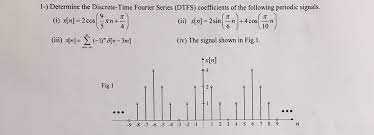- How do you calculate DTFS coefficient?
- What are the DFT coefficients?
- What are properties of DTFS?
- What is DTFS in DSP?
How do you calculate DTFS coefficient?
x[n]=∑N−1k=0Ck⋅ej2πkn/N⋯(1), which is called the Discrete Time Fourier series (DTFS). The frequency range of DT signals is unique over the interval (−π,π) or (0,2π) .
What are the DFT coefficients?
DFT coefficients, Xk, give amplitudes and phases of complex sinusoids at integer frequencies k, from 0 to N−1, that sum to the original signal x[n], comprised of N points.
What are properties of DTFS?
Like other Fourier transforms, the DTFS has many useful properties, including linearity, equal energy in the time and frequency domains, and analogs for shifting, differentation, and integration.
What is DTFS in DSP?
< Digital Signal Processing. Digital Signal Processing. The Discrete-Time Fourier Transform (DTFT) is the cornerstone of all DSP, because it tells us that from a discrete set of samples of a continuous function, we can create a periodic summation of that function's Fourier transform.
 Howtosignalprocessing
Howtosignalprocessing



